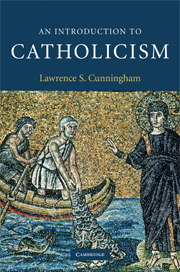Book contents
- Frontmatter
- Contents
- Illustrations
- Preface
- Acknowledgments
- 1 The many meanings of Catholicism
- 2 Roman Catholicism
- 3 Being Catholic: Some typologies
- 4 Catholicism in place and time
- 5 Catholic worship
- 6 The rule of faith
- 7 Catholic spirituality
- 8 The missionary character of Catholicism
- 9 Catholic reformation(s)
- 10 The moral life
- 11 The contemporary Catholic Church
- 12 Reading Catholicism: Bibliographical resources
- Index
Preface
Published online by Cambridge University Press: 05 June 2012
- Frontmatter
- Contents
- Illustrations
- Preface
- Acknowledgments
- 1 The many meanings of Catholicism
- 2 Roman Catholicism
- 3 Being Catholic: Some typologies
- 4 Catholicism in place and time
- 5 Catholic worship
- 6 The rule of faith
- 7 Catholic spirituality
- 8 The missionary character of Catholicism
- 9 Catholic reformation(s)
- 10 The moral life
- 11 The contemporary Catholic Church
- 12 Reading Catholicism: Bibliographical resources
- Index
Summary
When the editors of Cambridge University Press asked me to contribute a volume on Roman Catholicism for a series of books they were publishing on the religious traditions of Christianity I was both honored to have been asked and pleased to accept. Having worked on the book for some time, I now note ruefully that it was a task far more complicated than I had first imagined. To write about Catholicism encompassing its history, practice(s), and beliefs within the manageable framework of a single volume is not easy especially if the book is not to be a dreary litany of persons and ideas and a catalog of devotional practices, customs, and movements. Take a common term such as “Vatican” – a word that is often identified with Roman Catholicism. Vatican can refer to a specific place in Rome with a history that predates Christianity; it is the site of the purported burial place of the Apostle Peter; it is the location of a major basilica over the tomb of Saint Peter whose history goes back to the early fourth century; it has been the home of the popes since the late Middle Ages. Beyond those markers, it is also a shorthand term for the official administrative body assisting the pope (as in “The Vatican said yesterday …”), and those offices are often misidentified with the Vatican City State which is a sovereign state established in 1929 after the successful negotiations with the Italian government in a formal treaty known at the Lateran Treaty.
- Type
- Chapter
- Information
- An Introduction to Catholicism , pp. vii - xPublisher: Cambridge University PressPrint publication year: 2009

